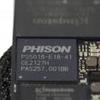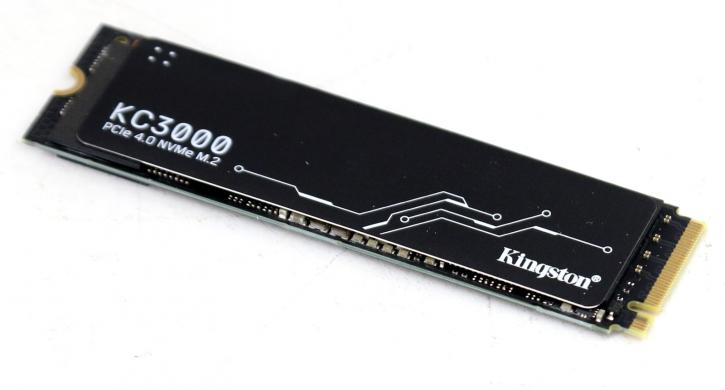Final Words & Conclusion
Final Words & Conclusion
The KC3000 is Kingston's latest premium drive offering, and it is available in capacities ranging from 512 GB to 1 TB to 2 TB to 4 TB, all of which employ a Gen4 interface. Its graphene aluminum heat spreader also contributes to the efficient dissipation of heat and the preservation of drive cooling performance under intensive operation, making it an excellent choice. based on the fast and popular Phison E18 controller (paired with Micron's latest 176L TLC NAND), it has one of the most advanced controllers available. The performance of this drive is noticeably superior to that of other drives, including the Samsung 980 Pro.
Endurance
We've talked about endurance previously; it's the number of times NAND cells can be written before they begin to malfunction. It is sufficient to remark that the values for QLC written (4 bits saved in a single NAND cell) are not particularly good at it. On this point, however, I always like to paraphrase Einstein: "Relativity, my man," he said. You can improve endurance by increasing the volume of your training sessions. 98 percent of your data is stored in a 'cold' state on your SSD and does nothing, and it is only the 2 percent of data that is written that is important. Volume sizes that are larger result in more NAND cells, and more NAND cells result in greater endurance. Now, if a NAND cell fails, it does not necessarily indicate that your data is lost. Many algorithms are constantly monitoring and managing your data; for example, if a cell's lifetime is about to expire, the bits inside that cell will be relocated to a more healthy cell.
So how long does a 1600 TWB storage unit last before NAND flash cells go the way of the dodo? Well, if you are a really extreme user, you might be writing 50 GB per day (really normal users probably won't even write that per week), but based on that value, 50GB x 365days= 18.25 TB per year written. You get 1600 TBW, so that's almost 88 years of usage and half that for the 1TB SSD version. Let me make it very clear, 50 GB per day each day of the year is a very ambitious number.
Performance
Taken just by its performance indices, the KC3000 is among the fastest drive for mainstream trace and sustained workloads. Keep in mind that the synthetic benchmarks, in which the SSD does exceptionally well, skew the picture; in real-world testing, the SSD remains one of the fastest, but the competition is close. Trace testing show excellent numbers, the random 4K IOPS in queues go through the roof. The linear performance remains great as well as sustained. The SSD managed to write linear for 38% of the drive at 6200 MB/sec for roughly 700 GB continuously. That is quite impressive.
Concluding
Kingston has done an excellent job with the KC3000, and we highly recommend this product if this is what you're after. The KC3000 SSD is equipped with the fastest flash to date and Phison's E18 SSD controller offers a highly responsive performance that demonstrated why it is one of the best SSDs available right now. The KC3000 comes pre-installed with a thermal label made of graphene-coated metal that is quite effective. Kingston unveiled its new top dog With read/write speeds of around 7 GB/s, the SSD delivers excellent performance and outperforms its predecessor by some margin as well. It has to be said; the KC3000 is a somewhat costly SSD; measured in terms of GB that boils down to 20 cents per GB (street price), the extra money you'll pay for the KC3000 isn't really going toward the quicker performance than that of the PCIe Gen3 interface. Of course, to get the best out of it, you'll need a PCIe Gen 4 infrastructure, and at the time of writing, that means a compatible Ryzen processor on, say, a B550 or X570 chipset-based platform. Intel started with PCIe gen 4.0 as well for Rocket Lake and Alder Lake (Z590/Z690). This SSD shivers in performance given the right conditions, and for the rest of them, on some workloads, you are down to high-end class NVMe performance. Kingston backs the storage unit with a proper five years, that or the TBW value reached. And there you have it; at 20 cents per GB, Kingston does offer a compelling but expensive product series. It's plenty capable for any workload you fire off at it. The KC3000 is a compelling option for consumers searching for a top-of-the-line Gen4 M.2 SSD at a somewhat competitive price. All of this adds up to an amazing release and a drive we can suggest for enthusiasts, pro-users and content makers alike.
Recommended Downloads
- Sign up to receive a notification when we publish a new article
- Or go back to Guru3D's front page



